Why are playgrounds so boring?
And who was "The Godmother of Play"?
Well, school is officially back in session here in London!
And thinking about schools got me thinking about playgrounds.
A few years ago, I saw an article about ‘the dullest playground in Britain.’
Here’s what it looks like:
Yeah, not exactly exciting!
It wasn’t long after seeing this image that I took my kids to a playground near our house in London.
Looking around at the equipment on the playground, I had the same feeling.
Swings, a slide, a piece of equipment to climb on.
These playgrounds are all the same.
How is it that playgrounds have barely evolved since the time I was a kid?
Aren’t there any more interesting playgrounds out there?
I was curious…
My curiosity led me to discover a British woman who shared my feeling that playgrounds should be more exciting.
Meet Lady Marjory Allen of Hurtwood.
In 1946 Lady Allen, a landscape architect and children’s rights activist, had a problem.
She looked around at the playgrounds in British cities and towns and felt children were getting a “pretty raw deal.”
“Municipal playgrounds are often as bleak as barrack squares and just as boring,” she said.
“We give them an asphalt square playground with a few pieces of mechanical equipment — and they’re expected to spend all their adolescent lives swinging back and forth on a swing.
“It’s just not good enough.
“It’s a problem that had to be solved – somehow.”
The problem Lady Allen observed was not unique to Britain.
And after a visit to Denmark, she discovered that someone had already solved it.
There, in the neighborhood of Emdrup (just outside Copenhagen), she saw a play area for children unlike any she had seen before.
There were no slides or swings.
In fact, there was no readymade play equipment.
Instead she saw a “wealth of waste material” – and endless possibilities.
The children could dig, build houses, experiment with sand, water or fire and play games of adventure and make believe.
The play area was referred to as a “Junk Playground,” and it was the brainchild of a Danish landscape architect named C.T. Sørensen.
Sørensen came up with the idea in the 1930s, inspired by watching children play with leftover materials on construction sites.
During the Nazi occupation of Denmark in 1942, the playground in Emdrup was opened based on Sørensen’s ideas, and filled with “junk” – including wood, tires, bricks, rope and old furniture.
The children playing there had the supervision of an adult, an ex-seaman who was also a trained nursery school teacher.
But he was there to support – not lead – the children in play.
The Junk Playground was a place where children could “dream and imagine and make dreams and imagination reality.”
“It is so obvious that the children thrive here and feel well,” Sørensen said.
“Of all the things I have contributed, the Junk Playgrounds [are] the ugliest, for me.
“However, it is the most beautiful and best of my works.”
Visiting Emdrup’s Junk Playground gave Lady Allen a “flash of understanding,” and she returned to London and began advocating for the creation of Junk Playgrounds in England.
In a 1946 article in Picture Post, she suggested converting bombed sites in the UK into playgrounds, explaining how children and society would benefit from these active play spaces.

The photos accompanying the article showed children playing and working together to create play structures – learning lessons on collaboration, compromise, and safety.
Renaming the “Junk Playground” an “Adventure Playground,” Lady Allen argued that it could be a tool for preventing juvenile delinquency, and would help foster “a democratic community” that allowed children “to come to terms with the responsibilities of freedom.”
Her advocacy and passion convinced others – and it wasn’t long before the first Adventure Playgrounds were opened in London.
One was next to a bombed church in Camberwell and another on the site of a destroyed residential property in Paddington.
In these Adventure Playgrounds, children constructed their own play spaces, using broken beams and shattered doors to make swings and dens.
“Gradually and slowly, we created the Adventure Playgrounds in this country, and I think it’s opened people’s eyes really to what children really want to do,” Lady Allen said.
The UK Adventure Playgrounds would have an adult “play worker” to assist if needed, but the children were in charge of determining play, and using tools to create their own houses and climbing frames.
Lady Allen advocated that the Adventure Playgrounds gave children a free and permissive environment to play and make friends – and an opportunity to “take really dangerous risks and overcome them.”
“When they set their heart on doing something which may be beyond their capabilities, they’ll stay at it and stick at it until they’ve achieved it, and this builds up a tremendous sense of self-confidence.”
“If they are so overprotected that they are never able to meet these challenges and able to take these risks, I think they will be the poorer for it when they grow up.”
Accidents at the Adventure Playgrounds were rare – and when people raised concerns to Lady Allen about the possible dangers of the Adventure Playgrounds, she responded simply:
“Better a broken bone than a broken spirit.”
After Lady Allen had created 40 Adventure Playgrounds in the UK, she noticed that a large group of children were being excluded from the opportunity – children with disabilities.
“That was a gap that had to be filled,” she said.
Determined to make it happen, Lady Allen led the fundraising, found the site, and even drove the bulldozer to create the first Adventure Playground specifically designed for children with disabilities.
Throughout her life, she continued advocating for children in the UK and around the world, through UNICEF, the World Organization for Early Childhood Education (which she co-founded), and other international organizations.
In 1965, she embarked on a lecture tour in the US, advocating for children and sharing her passion for Adventure Playgrounds from the White House to New York City.
She charmed the US press who called her “the no nonsense dowager and the filler-in of gaps.”
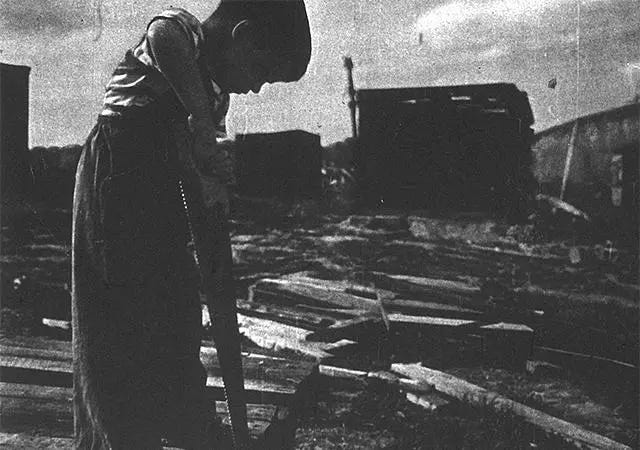
After touring many showpiece playgrounds in the US she commented that they were “an administrator’s heaven and a child’s hell.”
“It is time we decide whether our playgrounds are to be designed for adults, who love to be neat, or for children, who love to be dirty.”
Lady Allen died in 1976, but her impact can still be seen across the Adventure Playgrounds in the UK (including the Lady Allen playground named in her honor) and beyond.
The closing words of her 1975 memoir The Memoirs of an Uneducated Lady captured her spirit:
“The work I have chosen to do is never finished.”
One more thing…
There are approximately 1,000 adventure playgrounds today in Europe, Japan, and the US.
Still curious? A documentary called The Land features kids playing on an Adventure Playground in Wales.
In other news…
In case you missed last week’s issue, I shared 25 curious questions you could ask your family members (or friends) about their lives.
And — following my own advice — have lined up a chat with my Uncle Frank to ask him these questions and see what I can learn.
Growing up, I knew my uncle had been a serious competitive swimmer, who swam on the team at Indiana University with Olympic champ Mark Spitz1.
But I did not know just how good the IU swim team was back then.
I never really heard my uncle talk about it, but I found this article that reported it was “the greatest team ever — in any sport.”
So I plan to ask him about this — and am curious what else I will discover…
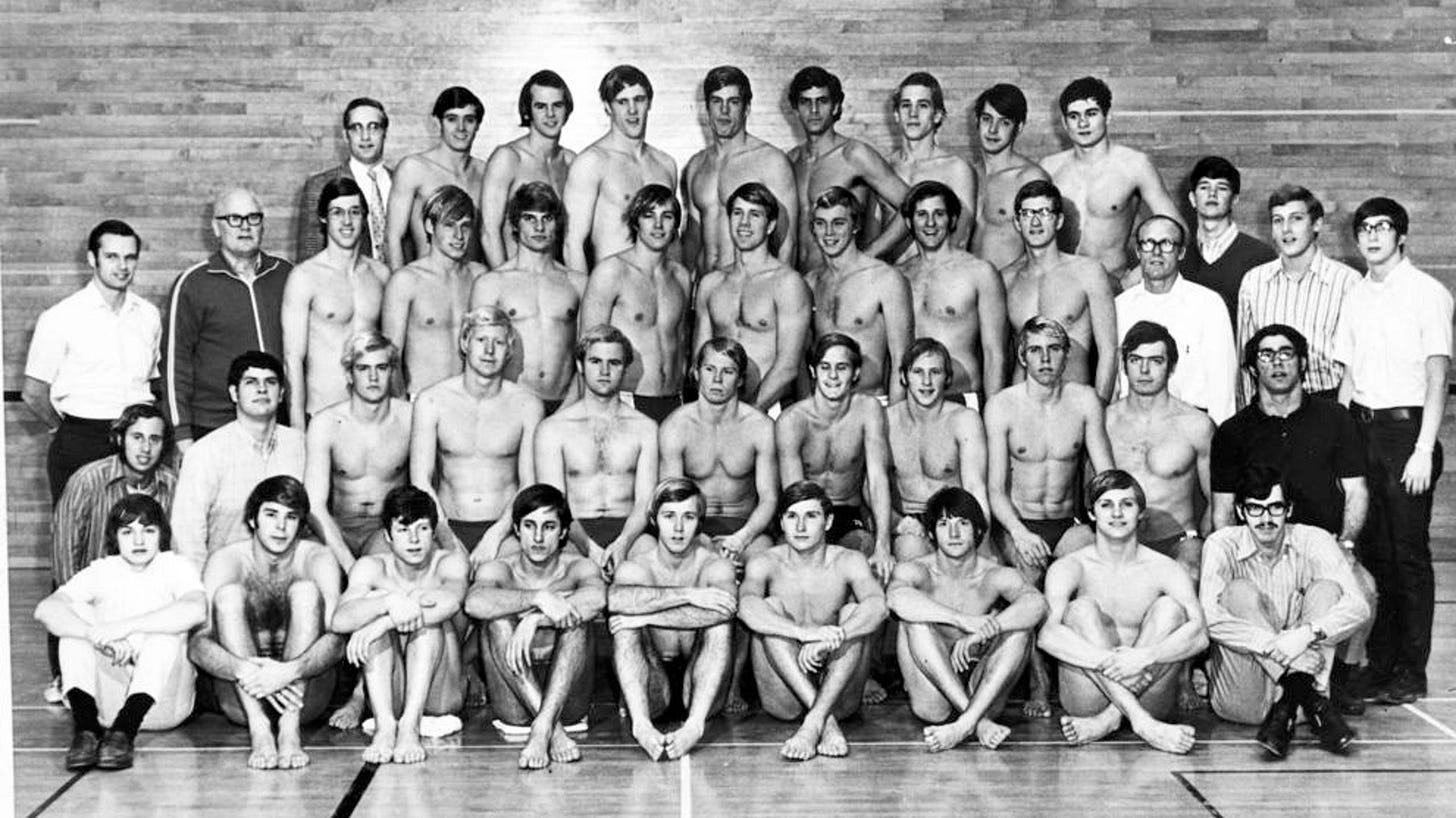
How Can I Help?
I’ll keep saying it: Communication matters.
And good news, friends… If you want to improve your communication (and get all the good things that come with that), I’m your gal.
So many companies could reap so benefits – from performance and culture to retention and engagement – by improving their communication.
So, if you know someone who could benefit from some help (as even the most seasoned leaders do), please get in touch and check out my website for more information.
You can also see my Top 10 list of what I can (and can’t) do for you here.
And if you see any communication examples (the good, the bad, and the ugly) that you think are worth analyzing or sharing, please send them my way!
Stay Curious!
-Beth
Mark Spitz was the Michael Phelps before Michael Phelps existed. Spitz won seven gold medals at the 1972 Olympics — each in world-record time. You may have seen the photo Phelps took in tribute to Spitz after the 2016 Olympics.








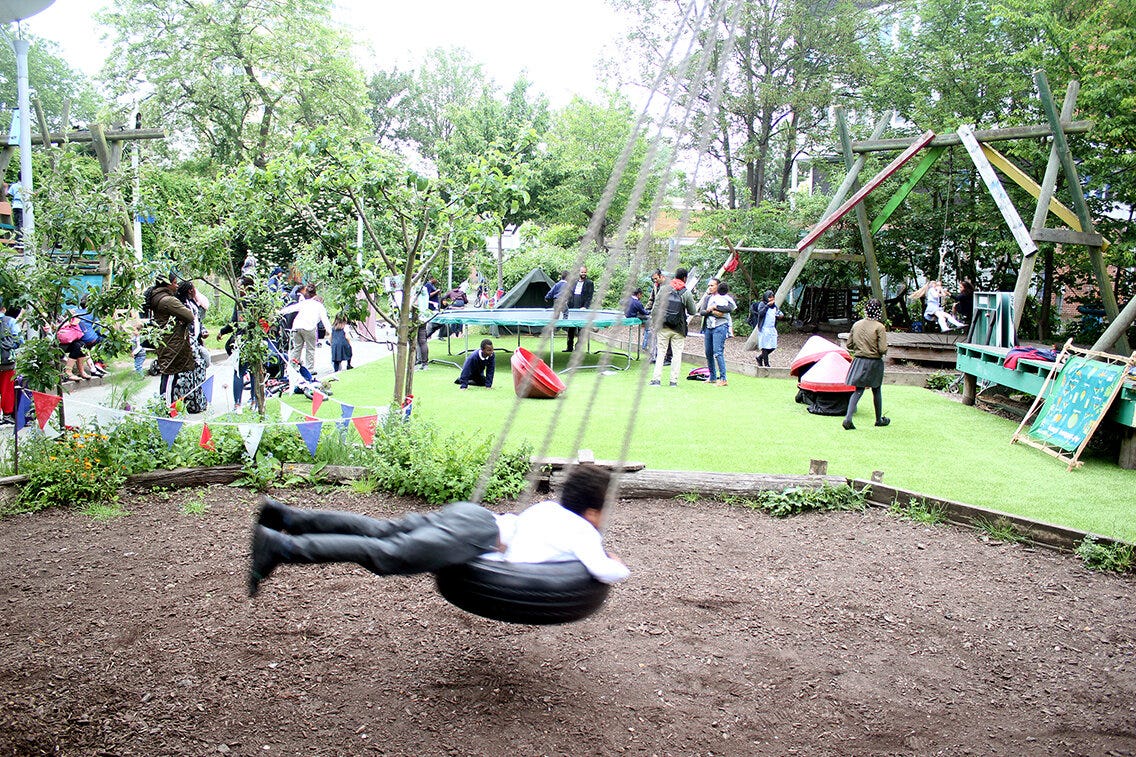
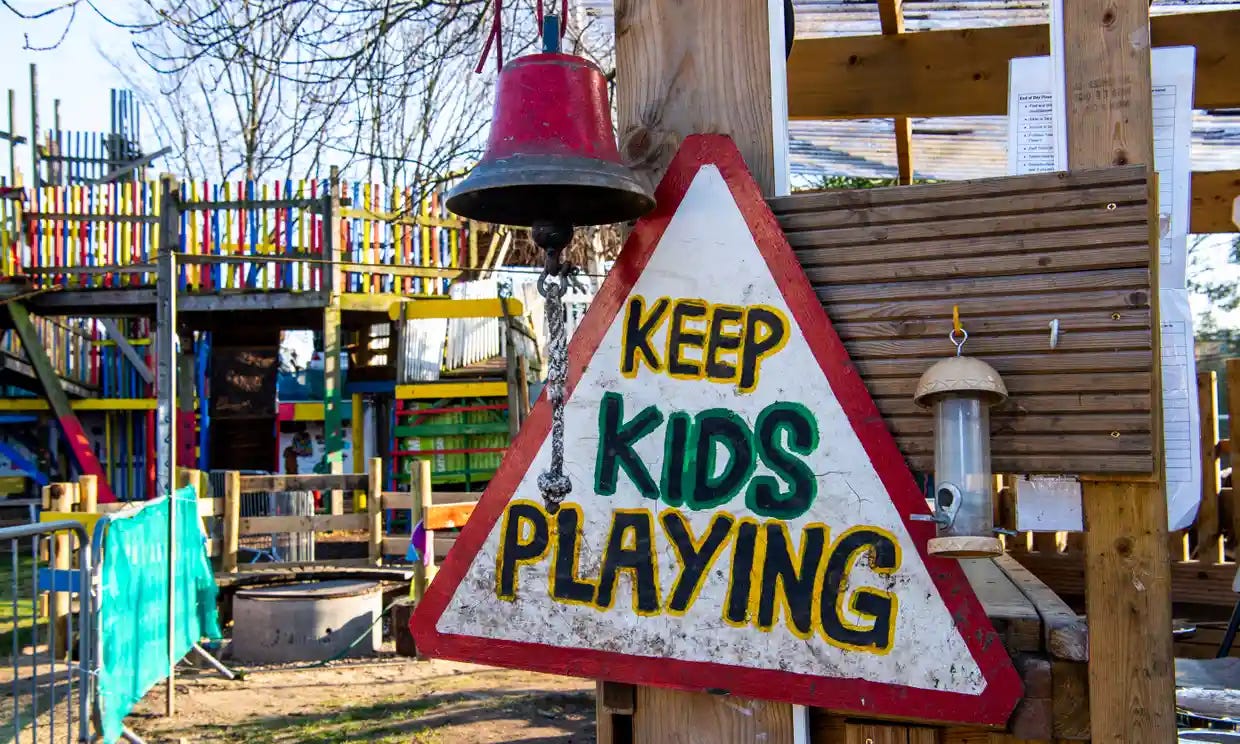
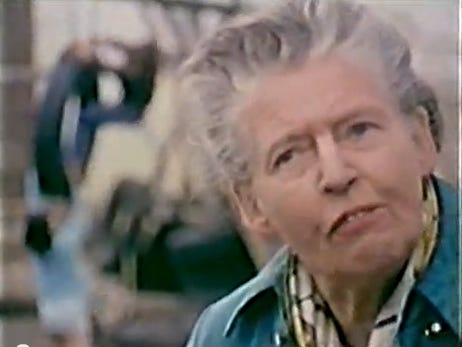

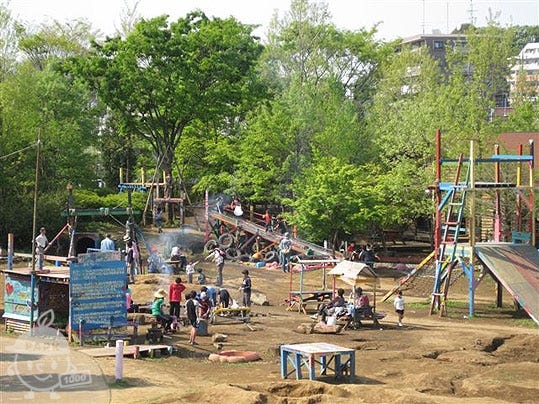
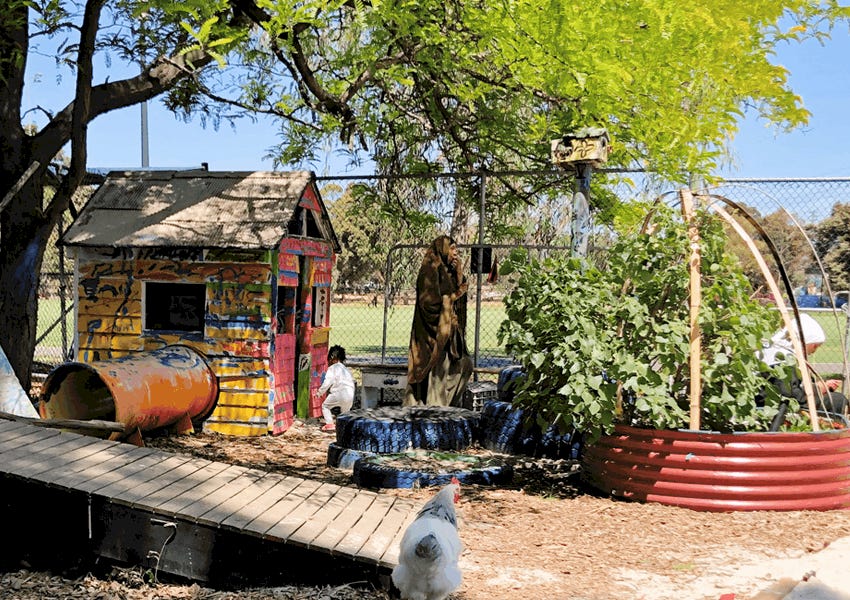
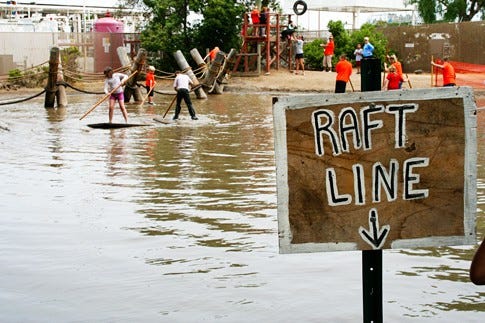

Love a great adventure playground. Some risk is important to learn and grow!
Again, another fascinating article, Beth. And I loved that first photo of the dull playground...